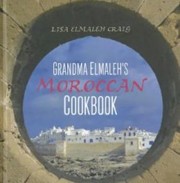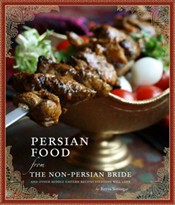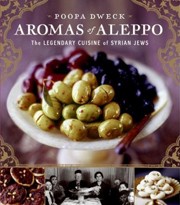Many cookbooks today are more suited to the coffee table than the kitchen. With sumptuous photos and illustrations on each page, recipes can take second place. But although these gorgeous images will surely make your mouth water, can you really imagine a home cook turning out such perfect photo-shoot creations?
In The New Mediterranean Jewish Table, Joyce Goldstein returns to a more old-fashioned style of cookbook. With recipe after recipe — more than 400 of them — set out in a pleasing design, one is introduced to real food, for preparation by real home cooks. What a pleasure!
Goldstein, a chef, restaurateur, cooking teacher, food industry consultant, and prolific cookbook author, with numerous awards to her credit, delves into Mediterranean food traditions and their adaptations by Jewish cooks so as not to contravene the kosher dietary laws. She expands the commonly held definition of what is meant by “Jewish cooking” — namely, Ashkenazi food, with its European heritage — to take in food traditions that developed in Jewish communities living in the Mediterranean region. This includes Spain, North Africa, France, Italy, Greece, Turkey, and the Middle East. So brisket is out, lamb is in; forget bagels, try pita; less meat, more veggies; spice things up with sumac, charmoula, and preserved lemons.
One may wonder, why the label “Mediterranean” rather than the more familiar “Sephardic” in the book’s title? Goldstein explains that referring to food traditions that developed in all parts of the Mediterranean as Sephardic is inaccurate. She distinguishes three different Mediterranean Jewish communities: Sephardic from Spain and Portugal, Maghrebi from North Africa, and Mizrahi from the Muslim Middle East. While ingredients and cooking methods for popular dishes often overlap, there are also distinctions based on the communities that adopted and adapted them.
In her helpful introduction, Goldstein provides an overview of Mediterranean Jewish communities and the development of their culinary traditions, some history, sources, and brief explanations of kashrut and the Jewish holidays. Additionally, each recipe is accompanied by a paragraph or two describing its origins as well as how, where, and when it is served. It makes for fascinating reading even if you choose not to prepare the dishes.
But Goldstein encourages their preparation. “The recipes in this book are not museum pieces,” she writes. They are “alive” and are open to change and personal interpretation. It’s a wonderful invitation to prepare something new, and at the same time expand Jewish culinary traditions. How about Moroccan Lamb with Preserved Lemon and Olives? Perhaps Braised Artichokes, Favas, and Lettuce, from Italy? Or, for an unusual dessert, Turkish Grain and Fruit Pudding, with an Egyptian variation?
The New Mediterranean Jewish Table is Joyce Goldstein’s welcome contribution to a genre that presents food as an entry point to understanding (and tasting) the Jewish experience.
Related Content:





